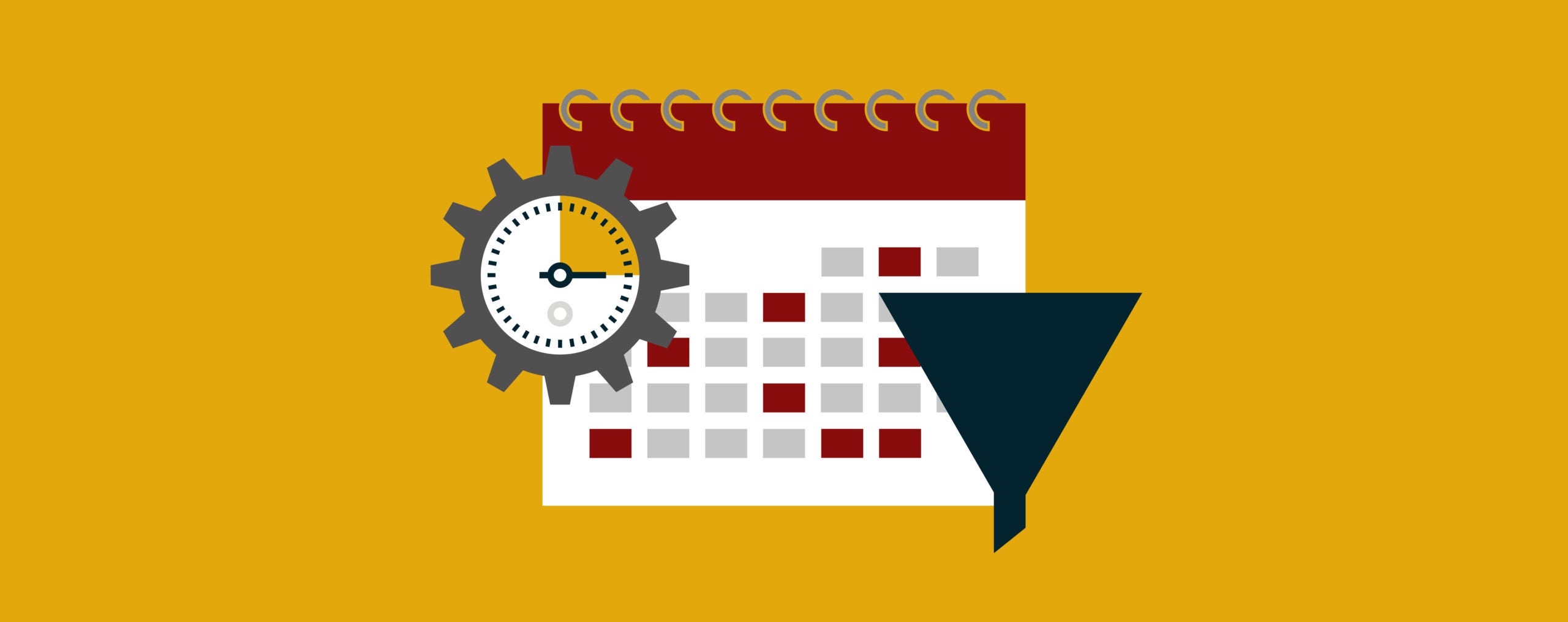 Jun 24, 2025
Persona
Jun 24, 2025
Persona
Understanding how seasonality shapes the undergraduate enrollment funnel is critical to building effective enrollment marketing strategies in higher education. Each year, student behavior follows a predictable cycle aligned with academic calendars and application deadlines, driving shifts in search volume, intent, and conversion actions across the funnel. From early exploration in the fall to decision-making in the spring, these fluctuations signal when prospective students are researching, applying, or confirming their enrollment.
Mapping these behaviors to funnel stages: top, mid, and bottom, clarifies where students are in their journey, but also gives insight on when to shift messaging and targeting on Google Ads. Using Google Ads, paired with tools like Google Tag Manager and offline conversion tracking, allows us to further understand the funnel and is powerful for optimizing performance and maximizing impact.
Seasonality in Higher Ed
Seasonality is a predictable fluctuation or pattern seen in data that repeats every year. It plays a major role in shaping student recruitment and undergraduate enrollment behavior, directly influencing search volume, query intent, and conversion action activity throughout the year.
The cycle begins in September and October, when many colleges open applications. During this time, upper-funnel activity surges as high school seniors begin exploring their options. In November, application submissions peak, leading up to typical Early Action and Early Decision deadlines on November 1. December typically sees a slowdown in engagement due to holiday distractions and academic breaks.
In January, momentum picks up again as the regular decision deadline approaches, pushing a wave of mid and lower funnel conversions. Between February and April, we see two buckets of students: yield and late applicants. Admitted students are actively seeking information about campus visits, financial aid deadlines, and steps required to confirm their enrollment before the May 1 decision deadline. While other students are still applying and inquiring about information during this time, particularly to colleges and universities with rolling admissions or extended deadlines.
Meanwhile, high school juniors begin entering the research phase, looking for general information about colleges, programs, and application timelines, marking the top of the undergraduate enrollment funnel for the next recruitment cycle. June through August marks the Summer Melt period, when institutions focus on retaining deposited students and preventing drop-offs before fall enrollment.
Understanding these patterns is essential for timing digital marketing campaigns and aligning messaging with where students are in their decision-making process. Additionally, budgeting ad spend around seasonality is key. Pushing more spend around high-activity months maximizes impact while scaling back during slower periods ensures efficient use of resources.
Defining the Undergraduate Enrollment Funnel
- Top of funnel:
- Users are in an exploratory phase, oftentimes gathering research on multiple institutions, deciding what to move forward with.
- Mid-funnel:
- Users begin to narrow their focus, often searching for specific programs or comparing schools.
- Requests for information conversions spike here, along with campus visits.
- Bottom of funnel:
- Users show high intent to apply and participate in searches like “apply to [school name]” or “undergraduate application deadline.”
- Conversion actions like application submissions, apply now button clicks, tend to see spikes during this time.
Mapping student search behavior to these stages allows marketers to tailor ad copy, landing pages, and calls to action based on intent, driving more efficient and effective engagement throughout the enrollment journey.
Google Ads Metrics & Tools
Analyzing different Google Ads metrics allows us to pinpoint where students are in the funnel. One of the clearest patterns seen is the decline in application-related conversion actions immediately after major deadlines. When deadlines pass, high-intent users drop off, and search activity shifts toward broader, top, or mid-funnel action, resulting in a lower conversion rate (CVR). This decline is a signal that the audience has shifted to different stages of the enrollment funnel.
Spikes in inquiries tend to occur earlier in the cycle, when prospective students begin exploring options but aren’t ready to apply. Monitoring CVR along with conversion actions helps pinpoint funnel shifts and informs when to pivot messaging from direct application pushes to awareness. Inquiries and visit registration conversion actions can see spikes throughout the enrollment funnel.
Other trends to look out for:
- Search impression share can decline in highly competitive months, as more institutions are bidding on competitive terms.
- CPCs can spike during high-traffic months in the undergraduate enrollment cycle, as increased competition for high-intent keywords can inflate costs.
- Query intent shifts from general and exploratory to specific admission-focused terms when lower in the funnel.
Working with experienced digital marketing experts, including Google Premier Partners like Carnegie, can streamline optimization and improve results. Our insight into seasonality, funnel behavior, and advanced tools helps ensure campaigns stay aligned with student intent, especially during critical windows like pre-deadline spikes and early funnel engagement.
Additional Enrollment Marketing Tools
Additional tools like Google Tag Manager (GTM) and offline conversion tracking are essential for a complete view of campaign performance. GTM simplifies the setup and management of conversion actions, ensuring that key events like form submissions or Common Application button clicks are accurately captured.
Digital signals tell part of the story, but pairing with offline conversions gives you a full picture view. Offline conversions, such as full application submissions tracked through CRM systems like Carnegie Slate, provide deeper insight into which campaigns are actually driving enrollment. Combining both, along with interpreting Google Ads data, gives a clearer understanding of what’s working and what stage of the enrollment funnel it is working in.
It’s Time to Elevate Your Enrollment Marketing Strategy
Understanding the undergraduate enrollment funnel through Google Ads data offers a strategic advantage in a highly competitive higher education space. By recognizing seasonal trends, aligning strategies with funnel stages, and interpreting key metrics like CVR and conversion actions, institutions can better target students when it matters most.
Leveraging tools like GTM and offline conversion tracking adds depth, while working with experienced partners sharpens execution. When all these elements are connected, marketing efforts become more than just digital outreach—they become a coordinated system designed to drive real enrollment impact.
Ready to take your student recruitment efforts to the next level? Start a conversation with Carnegie today to leverage our expertise in data-driven strategies and innovative approaches so you can maximize your impact and convert more students throughout the enrollment cycle.
